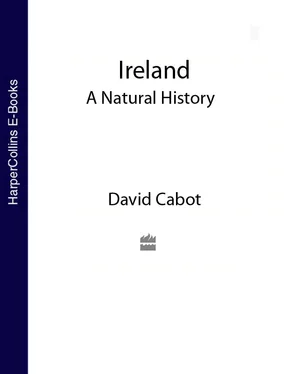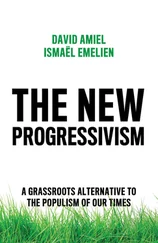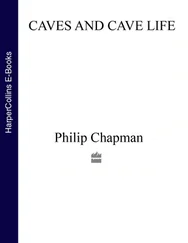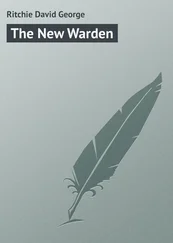1 ...6 7 8 10 11 12 ...39 By the turn of the eighteenth century the trend set by Gerard Boate of recording Irish natural history more by direct observation than by hearsay was well established. Edward Lhwyd (1670–1709), the eminent Welsh natural historian and Keeper of the Ashmolean Museum in Oxford, visited Ireland briefly in 1699 in search of antiquities and natural history. He toured places which many present-day naturalists would put high on their visiting list: the mountains of Sligo, Mayo, Galway and Kerry; the Aran Islands, Co. Galway; the Burren, Co. Clare, and Co. Antrim. He recorded several new plants and reported his visit in a letter dated 25 August 1700 to his friend Tancred Robinson, Fellow of the Royal Society. It was printed in the Philosophical Transactions of the Royal Society somewhat late in 1712. 37
But the claim for writing the first original book on botany published in Ireland – Methodus plantarum, in horto medico collegii Dubinensis , jam jam disponendarum; In dua partes divisa; quarum prima de plantis, altera de fruiticibus & arboribus agit – must go to the first Professor of Botany at Trinity College Dublin, Henry Nicholson ( c .l681– c .l721). Published in 1712, it is a catalogue of plants growing in the Physic Garden at Trinity; hardly a natural history treatise, but a step in the right direction.
Two years later appeared a remarkable work written by the naturalist-gamekeeper Arthur Stringer ( c .l664– c .l728), who was employed by the Conway family on their estate east of Lough Neagh. The Experienc’d Huntsman was the first reliable text on the wild mammals of either Ireland or Britain. Strangely, it remained ‘undiscovered’ until James Fairley, whose attention had been brought to it by C. Douglas Deane (1914–92), Deputy Director of the Ulster Museum 1957–77 and ornithologist, encouraged its republication in 1977. 38Stringer had a genuine naturalist’s eye for the behaviour and habits of the wild mammals of his concern – deer, hares, foxes, badgers, martens and otters. All his observations ring true today despite his somewhat florid descriptions such as the entry for the badger, which he observed ‘is a very melancholy fat Creature, Sleeps incessantly, and naturally (when in Season) very Lecherous’.
Caleb Threlkeld: Synopsis stirpium Hibernicarum 1726
The appearance in 1726 of Caleb Threlkeld’s Synopsis stirpium Hibernicarum, the earliest Irish flora, represented a turning point in the history of natural history in Ireland. 39Threlkeld (1676–1728), an English Dissenting minister and physician, settled in Dublin in 1713, and compiled his flora from several sources, which he tapped to some varying and unclear degree. He probably used the Heaton manuscript mentioned earlier, but he also harnessed records from other naturalists such as William Sherard, founder of the Chair of Botany at Oxford University, who was based in Co. Down for four years. Sherard’s plant records were published in the second edition of John Ray’s Synopsis Methodica stirpium Britannicarum (1696), 40and then extracted by Threlkeld for his own work. Other information was gathered from William How’s work mentioned above, and finally Threlkeld used his own observations. Opinions differ as to the extent of Threlkeld’s personal input. Was he ‘A candid Author and plain Dealer’ as suggested by Nathaniel Colgan, author of the Flora of County Dublin, 41or just the opposite, i.e. a plagiariser, as suggested by Mitchell? 42Nelson contends that the bulk of the information in the book was generated by Threlkeld. 43The recent discovery of 22 sheets holding plant specimens in the Herbarium in Trinity College, Dublin, and very likely to have been the minister’s own collection from his Hortus Siccus , would support the latter’s hypothesis. 44The author’s preface in the Synopsis is clear about his own field work:
Caleb Threlkeld’s Synopsis stirpium Hibernicarum (1726), the earliest Irish flora.
‘During the Summer Months I used to perambulate in Company of ingenious Men, both of the Clergy and Laity, to have ocular Demonstration of the Plants themselves in their native Soil, where Nature regaled our Senses with her Gaiety and Garnishes, which makes some resemblance of the paradisiacal State. From twelve Years Observations I collected Specimens for an Hortus Siccus, and set down Places where they grew, besides I made Inquiries of Ingenious Men, and now I have reduced our Plants into the Model you here see.’
An Irish Herbal
Following the appearance in 1525 of Bancks’ Herbal, 45the first printed herbal in English, named after the printer Richard Bancks, there was a succession of other herbals acting as vehicles for botanical information. But the herbalist’s era came to an end in 1735 when Linnaeus published Systema Naturae , the book that ushered in modern botany. 46The very same year, Ireland’s first herbal Botanalogia Universalis Hibernica by John K’Eogh (1681?–1754) was published in the city of Cork. 47Probably born in Co. Roscommon, K’Eogh was appointed Chaplain to James King, fourth Lord Kingston, and later obtained the living of Mitchelstown, Co. Cork. K’Eogh’s reason for writing the herbal was the daily viewing of his master’s gardens in which grew nearly 200 different species of herbs and trees. ‘I was not acquainted with any Garden, which could show so many, this was no small advantage, or Conveniency to forward this Undertaking.’ However, K’Eogh’s vision extended beyond the garden walls and comments on Irish localities and habitats of some of the listed plants are included in the herbal. A similar treatise followed in 1739 – Zoologia Medicinalis Hibernica – on the medicinal properties of animals. 48In his preface, K’Eogh stated ‘My principal intention in publishing these treatises on vegetables and animals, was to contrive to cure all the diseases, which the natives of kingdom are afflicted with, by simple, easy, and safe methods, prepared either by pulverisation, decoction, infusion, distillation, etc.’. The frequent eating of the brains of sparrows ‘excite venery and clear the sight’. Powered otter testicles drunk in a liquid ‘help to cure the Epilepsy’; the fat of a heron, mixed with oil of amber, ‘being dropt warm into the ears, cures deafness’. K’Eogh acknowledges his debit to Horace (65 BC–AD 8), Pliny (d. AD 79), Avicenna (980–1037) Albertus Magnus ( c .1280) and others for the preparation of the listed prescriptions. Unfortunately no natural history information is included along with the animals listed in the Zoologia .
Keogh’s Botanalogia Universalis Hibernica (1735) – a late herbal.
County natural histories and botanical works
The year 1744 marked the formation of the Physico-Historical Society of Ireland, some 13 years after the founding of the Dublin Society (later Royal Dublin Society). The learned gentlemen of the PHSI decided to prepare a series of monographs on the ‘ancient and present state’ of the counties. These contained lists of plants and often animals, essays on agriculture and descriptions of minerals, woodlands, etc. They can be considered harbingers of the county natural histories that blossomed in the later half of the nineteenth century.
John Rutty’s (1697–1775) An Essay Towards a Natural History of the County Dublin , published in 1772, was the first real county natural history in Ireland and dealt extensively with the flora, fauna, geology, meteorology, agriculture, water, minerals, air and soils of Dublin as well as the mortality of Dubliners. 49He ignored the Linnean system of binomial classification which was in the process of being widely adopted in England. Under international agreement the year 1758 was taken as the start date of this new nomenclature – first unveiled by Linnaeus in Species Plantarum in 1753 – whereby each species of plant or animal is described by two, sometimes three, Latin names. The Linnean system simplified matters. Thus Rutty’s long-winded scientific name for water mint – Mentha rotundifolia palustris seu aquatica major – would simply have been Mentha aquatica under the Linnean system. The binomial system meant that space was saved on paper at a time when printing costs were prohibitively high, and that names were easier to remember. Moreover, it provided a strong logical framework for all future advancement in the study of biology.
Читать дальше












